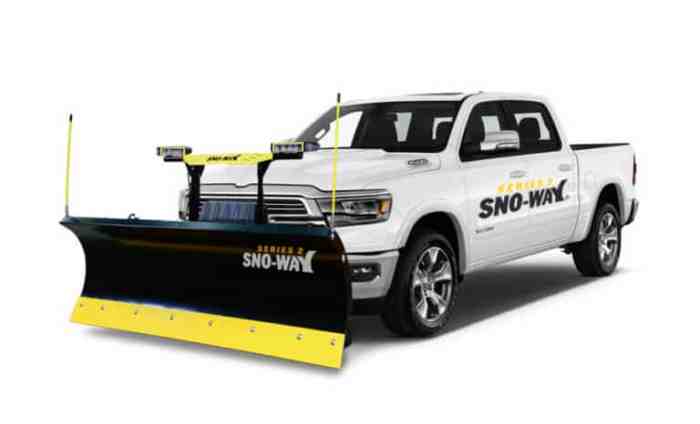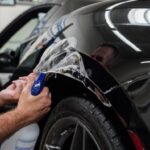Best snow plow setups for Ford F-250? Yeah, we’ve got you covered. Winter’s coming, and if you’re rocking an F-250, you need to be ready to conquer the white stuff. This guide dives deep into everything you need to know, from choosing the right plow type – straight blade, V-plow, or pushbox – to figuring out the best mounting system and adding those sweet accessories.
We’ll even cover the legal stuff and some killer mods to make your truck a snow-clearing beast. Get ready to become the neighborhood snow-removal hero (or at least keep your driveway clear!).
We’ll break down the different plow types, their pros and cons for various snow conditions, and how they fit different F-250 models. We’ll also walk you through mounting your plow, essential accessories, and crucial safety tips. Plus, we’ll give you some sweet setup ideas for different budgets and needs, whether you’re clearing your own driveway or tackling a commercial lot.
So buckle up, buttercup, it’s time to learn how to dominate winter!
Plow Types for Ford F-250
Choosing the right snow plow for your Ford F-250 depends heavily on your needs and the typical snow conditions you encounter. Factors like driveway size, snowfall amounts, and budget all play a role in selecting the optimal plow. This section will break down the most common plow types and their suitability for a truck like the F-250.
Straight Blade Plows
Straight blade plows are the simplest and often most affordable option. They’re essentially a flat, rectangular blade that pushes snow to the side. Their straightforward design makes them relatively easy to maintain.
| Plow Type | Snow Conditions | Pros | Cons |
|---|---|---|---|
| Straight Blade | Best for light to moderate snowfalls, relatively flat surfaces. Less effective in heavy, packed snow or deep drifts. | Affordable, simple design, easy maintenance, good for clearing large, relatively flat areas. | Limited maneuverability, less effective in heavy snow or drifts, can struggle with ice. |
V-Plows
V-plows are shaped like a “V,” allowing them to move snow to either side more efficiently than a straight blade. This makes them ideal for maneuvering in tighter spaces and handling larger volumes of snow.
| Plow Type | Snow Conditions | Pros | Cons |
|---|---|---|---|
| V-Plow | Effective in a wider range of conditions, including moderate to heavy snowfalls and drifts. Handles packed snow relatively well. | Excellent maneuverability, high snow-handling capacity, efficient in various snow conditions. | More expensive than straight blades, more complex design can lead to higher maintenance costs. |
Pushbox Plows
Pushbox plows are designed for moving large volumes of snow quickly. They have a high capacity and are often used for commercial snow removal. They are typically larger and heavier than straight or V-plows, demanding a more powerful truck.
| Plow Type | Snow Conditions | Pros | Cons |
|---|---|---|---|
| Pushbox Plow | Best for very heavy snowfalls and large areas. Excellent for moving large amounts of snow efficiently. | High snow-handling capacity, efficient for large areas, can handle very heavy snow. | Expensive, requires a powerful truck, less maneuverable than V-plows or straight blades, higher maintenance needs. |
Mounting Systems and Compatibility
Choosing the right mounting system is crucial for a safe and effective snow plowing experience. The system you select will depend on your specific Ford F-250 model year, the type of plow you’ve chosen, and your personal preferences. Different manufacturers offer varying systems, each with its own strengths and weaknesses. Understanding these differences will help you make an informed decision and ensure a smooth installation process.Different plow manufacturers, such as Meyer, Fisher, and Western, utilize distinct mounting systems designed to integrate with the unique frame structures of various Ford F-250 trucks.
These systems typically involve a combination of brackets, mounting plates, and sometimes a specialized frame-mounted push tube. Compatibility varies significantly across models and years; a system designed for a 2010 F-250 may not be directly compatible with a 2023 model. Always consult the manufacturer’s compatibility charts to ensure a proper fit. Improper mounting can lead to significant safety risks and damage to your truck.
Mounting System Variations
Meyer, Fisher, and Western snow plows each utilize proprietary mounting systems. Meyer systems are often praised for their relative simplicity, while Fisher systems are known for their robust construction. Western plows typically offer a good balance between these two. Each system requires specific mounting hardware and brackets designed to integrate seamlessly with the Ford F-250’s frame. These systems often differ in the placement of the mounting points on the truck, the type of brackets used, and the overall design of the plow-to-truck interface.
Understanding these differences is key to selecting the appropriate system for your specific plow and truck.
Compatibility Across Ford F-250 Models and Years, Best snow plow setups for Ford F-250
The compatibility of a snow plow mounting system with a specific Ford F-250 model and year is not universal. Manufacturers provide detailed compatibility charts that specify which plow models are compatible with which truck models and years. These charts often consider factors such as the truck’s frame design, the location of mounting points, and the overall weight capacity of the truck’s front end.
Failing to consult these charts can lead to purchasing an incompatible system and potentially damaging your truck. For example, a plow designed for a pre-2017 F-250 might not fit a 2020 model due to changes in the truck’s frame design.
Mounting a Snow Plow: A Step-by-Step Guide
Proper installation is critical for both safety and performance. Always consult the specific instructions provided by the plow manufacturer. This guide provides a general overview; specific steps may vary.
- Preparation: Gather all necessary tools, including wrenches, sockets, bolts, and possibly a jack and jack stands. Consult the manufacturer’s instructions for the exact tools needed.
- Vehicle Preparation: Ensure your Ford F-250 is parked on a level surface, the engine is off, and the parking brake is engaged. Disconnect the battery’s negative terminal.
- Mounting Bracket Installation: Carefully attach the mounting brackets to your truck’s frame, following the manufacturer’s instructions precisely. This typically involves aligning holes and securely fastening bolts.
- Plow Attachment: Attach the plow to the mounting brackets, ensuring all connections are secure and properly aligned. Again, meticulously follow the manufacturer’s instructions.
- Wiring: Connect the plow’s wiring harness to your truck’s electrical system, following the manufacturer’s wiring diagram. Ensure all connections are secure and properly insulated.
- Testing: Before operating the plow, test all functions to ensure everything works correctly. This includes checking the plow’s up/down and angle adjustments.
Common Mounting System Problems and Solutions
Several issues can arise during the mounting process. Addressing these problems promptly is essential for safe and effective snow removal.
- Improper Alignment: If the plow isn’t properly aligned, it can cause uneven wear and tear or even damage to your truck. Solution: Carefully check the alignment according to the manufacturer’s instructions and make adjustments as needed.
- Loose Bolts: Loose bolts can lead to a dangerous situation. Solution: Regularly check and tighten all bolts to ensure they remain secure. Use a torque wrench to ensure proper tightening.
- Wiring Issues: Incorrect wiring can prevent the plow from functioning properly or even cause electrical damage. Solution: Double-check all wiring connections against the manufacturer’s diagram and ensure proper insulation.
- Bracket Failure: A faulty bracket can compromise the entire mounting system. Solution: Replace any damaged or worn brackets immediately. Never compromise safety by using damaged parts.
Plow Accessories and Enhancements
Upgrading your Ford F-250 snow plow setup with the right accessories can significantly improve its performance, durability, and overall effectiveness. Choosing the correct components can mean the difference between a smooth, efficient snow removal job and a frustrating, time-consuming struggle. Let’s explore some key accessories that will take your plowing game to the next level.
Cutting Edges
The cutting edge is the part of the plow that makes direct contact with the snow and ice, so choosing a durable and effective one is crucial. Different materials offer varying levels of durability and performance in different snow conditions. Steel cutting edges are a common and cost-effective choice, offering good durability for general snow removal. However, they can wear down quickly when encountering hard-packed ice or abrasive materials.
Polyurethane cutting edges are known for their superior abrasion resistance, making them ideal for particularly tough conditions. They are also less likely to damage paved surfaces. While more expensive initially, their longevity can offset the higher upfront cost. Finally, carbide cutting edges represent the top tier in terms of durability and effectiveness, able to withstand even the most challenging icy conditions.
They are the most expensive option but offer the longest lifespan and superior performance.
Trip Springs
Trip springs are safety mechanisms designed to protect your truck and plow from damage in the event of an unexpected impact, such as hitting a hidden object or curb. When the plow hits an obstacle, the trip springs allow the plow to lift and clear the object, preventing damage to the truck’s frame and the plow itself. This is a critical safety feature that prevents costly repairs and potential injuries.
Properly functioning trip springs are essential for safe and effective snow plowing.
Lights
Adequate lighting is essential for safe snow plowing, especially during nighttime or low-visibility conditions. Plow lights improve visibility for both the plow operator and other drivers. Essential lights include headlights, work lights, and marker lights. These enhance visibility in poor weather conditions, increasing safety and reducing the risk of accidents. High-intensity LED lights are a popular choice due to their bright light output and energy efficiency.
Plow Accessory Comparison Table
| Accessory | Cost (Approximate) | Durability | Maintenance |
|---|---|---|---|
| Steel Cutting Edge | $100 – $300 | Moderate | Regular sharpening, replacement every 1-2 seasons |
| Polyurethane Cutting Edge | $200 – $500 | High | Periodic inspection, replacement every 2-3 seasons |
| Carbide Cutting Edge | $400 – $800 | Very High | Minimal maintenance, replacement every 3-5 seasons |
| Trip Springs | $50 – $150 per set | Moderate to High (depending on quality) | Regular inspection, replacement as needed |
| LED Plow Lights (Set) | $100 – $300 | High | Minimal maintenance, bulb replacement if applicable |
Legal and Safety Considerations
Plowing snow with your Ford F-250 might seem straightforward, but there’s a lot more to it than just hitting the gas. Understanding the legal framework and prioritizing safety are crucial for responsible snow removal and preventing accidents. Ignoring these aspects can lead to hefty fines, injuries, or even lawsuits.Local and state regulations concerning snow plowing vary significantly. Some areas require specific permits or licenses for commercial snow removal operations, while others may have ordinances regarding plowing times, methods, and the proper disposal of snow.
So you’re looking at the best snow plow setups for your Ford F-250, right? That’s a serious undertaking, especially if you’re running a fleet. Keeping those trucks safe means investing in good visibility, which is why you should also check out the Best dash cams for fleet trucks 2025 for added protection and evidence in case of accidents.
Back to those snow plows though – you’ll want something tough enough to handle the worst winter throws at you.
Before you even think about attaching a plow, check with your local municipality and state Department of Transportation (DOT) websites for specific regulations in your area. For example, many cities prohibit plowing snow into streets or onto private property without permission, and there are often restrictions on plowing during certain hours. Failure to comply with these regulations can result in fines or other penalties.
Local and State Snow Plow Regulations
Regulations concerning snow plow operation differ widely across states and municipalities. Some jurisdictions mandate specific training or certification for commercial snow removal operators. Others have detailed rules about the use of lights, reflectors, and other safety equipment on snowplows. These regulations are designed to ensure public safety and minimize the risk of accidents. For instance, a city might require all snowplows operating within its limits to have flashing amber lights visible from all directions, and to maintain a specific speed limit during snow removal operations.
Always check your local and state DOT websites for the most up-to-date information. Ignoring these rules can lead to fines, suspension of your operating permit, or even legal action in the event of an accident.
Safe Operating Procedures for Snow Plowing
Safe snow plowing hinges on responsible driving practices and awareness of your surroundings. Maintaining adequate visibility is paramount, especially in snowy conditions. Keep your windows and lights clean, and use your headlights even during daylight hours to increase your visibility to other drivers and pedestrians. Speed control is equally critical; slow down significantly in snowy conditions, and adjust your speed to match the prevailing visibility and road conditions.
Avoid sudden stops or maneuvers that could cause loss of control. Constant awareness of pedestrians and other vehicles is crucial. Be extra cautious near intersections, driveways, and areas with reduced visibility. Remember, snow removal is not a race; prioritize safety over speed.
Importance of Regular Maintenance and Inspection
Regular maintenance and inspection of your snow plow setup are essential for safe and efficient operation. Before each use, inspect the plow blade, mounting system, hydraulics, and lights for any damage or wear. Ensure that all components are securely fastened and functioning correctly. Regular maintenance, including lubrication and adjustments, will help to prevent malfunctions and extend the life of your equipment.
Neglecting maintenance increases the risk of mechanical failures, which can lead to accidents. A simple visual inspection before each use can often prevent costly repairs and ensure your safety.
Safety Tips for Operating a Snow Plow on a Ford F-250
Before starting any snow plowing operation, it’s crucial to prepare adequately. Here are some key safety tips:
- Always inspect your plow and truck before each use, checking for any damage or loose components.
- Ensure that your truck’s lights, signals, and wipers are functioning correctly.
- Drive slowly and cautiously, adjusting your speed to the conditions.
- Maintain a safe following distance from other vehicles.
- Be aware of pedestrians and other road users.
- Use your headlights, even during the day, to increase your visibility.
- Never plow snow into traffic or onto private property without permission.
- Wear appropriate safety gear, including gloves, warm clothing, and eye protection.
- Be aware of potential hazards such as black ice, drifting snow, and power lines.
- If you encounter a hazardous situation, stop and assess the situation before proceeding.
Truck Modifications for Snow Plowing

Modifying your Ford F-250 for snow plowing isn’t just about making the job easier; it’s about ensuring your safety and the longevity of your truck. Investing in the right upgrades can significantly improve plowing performance and reduce the strain on your vehicle’s components. This section details essential modifications, their benefits, costs, and installation difficulty.
Suspension Upgrades
Upgrading your F-250’s suspension system is crucial for handling the added weight and stress of a snow plow. A heavier-duty suspension, such as a new leaf spring pack or a complete coilover conversion, significantly increases the truck’s load-carrying capacity and improves stability while plowing. This prevents bottoming out and enhances control, especially when tackling heavy snow or uneven terrain.
Consider a suspension lift kit for added ground clearance, further reducing the risk of damage to the truck’s undercarriage.
Heavy-Duty Tires
Standard tires are often inadequate for the demands of snow plowing. Heavy-duty tires with aggressive tread patterns provide superior traction in snowy conditions, improving both plowing performance and overall safety. These tires offer increased durability and resistance to punctures and damage from harsh winter elements. Look for tires with a high load rating to accommodate the extra weight of the plow and snow.
Enhanced Cooling System
The increased engine strain from snow plowing can lead to overheating. Upgrading to a larger radiator, adding an auxiliary transmission cooler, or installing an upgraded cooling fan can help maintain optimal operating temperatures, preventing costly engine damage. These modifications are particularly important for prolonged plowing sessions or in challenging conditions.
Weight Distribution
Proper weight distribution is critical for safe and efficient snow plowing. Adding weight to the rear axle, such as weight bags in the bed or a weight distribution hitch, can improve traction and stability. This helps to counterbalance the weight of the plow at the front of the truck, reducing the risk of front-end sway or loss of control.
Modification Comparison Table
| Modification | Benefits | Costs (Estimate) | Installation Difficulty |
|---|---|---|---|
| Heavy-Duty Suspension (Leaf Springs or Coilovers) | Increased load capacity, improved stability, prevents bottoming out | $1,000 – $5,000+ | Moderate to Difficult (Professional installation often recommended) |
| Heavy-Duty Tires | Superior traction, increased durability, improved safety | $800 – $2,000+ (depending on tire size and brand) | Easy (can be done at home or by a tire shop) |
| Enhanced Cooling System (Radiator, Transmission Cooler, Fan) | Prevents engine overheating, extends engine life | $500 – $2,000+ | Moderate (some mechanical knowledge may be required) |
| Weight Distribution (Weight Bags or Hitch) | Improved traction, enhanced stability, reduced sway | $100 – $500+ | Easy (weight bags are simple to install; a weight distribution hitch requires some mechanical skill) |
Maintenance and Repair

Keeping your Ford F-250 snow plow setup in top condition is crucial for safe and efficient snow removal. Regular maintenance prevents costly repairs and ensures your plow performs optimally throughout the winter season. Neglecting maintenance can lead to breakdowns at the worst possible times, leaving you stranded and potentially causing damage to your truck or the plow itself. This section Artikels a maintenance schedule, common problems, and tips for extending the life of your equipment.
Preventative Maintenance Schedule
A proactive approach to maintenance is key. Following a regular schedule minimizes downtime and maximizes the lifespan of your snow plow. This schedule assumes average use; adjust based on your specific needs and the intensity of snowfalls in your area.
| Task | Frequency | Notes |
|---|---|---|
| Inspect all bolts and connections for tightness | Before each snow event | Pay close attention to the mounting system and plow components. Tighten any loose bolts. |
| Check hydraulic fluid levels (if applicable) | Before each snow event | Ensure fluid is at the correct level and free of contamination. Top off as needed. |
| Inspect plow blade for damage | Before each snow event | Check for dents, cracks, or excessive wear. Repair or replace as necessary. |
| Lubricate moving parts | Monthly | Use appropriate grease on pins, hinges, and other moving components. |
| Inspect wiring and electrical connections | Monthly | Look for frayed wires, corrosion, or loose connections. Repair or replace as needed. |
| Complete a thorough inspection of the entire plow system | After the snow season | This includes a detailed check of all components, including the hydraulics (if applicable), the mounting system, and the blade. |
| Store the plow properly | After the snow season | Clean the plow thoroughly, apply a protective coating to prevent rust, and store it in a dry location. |
Common Snow Plow Problems and Solutions
Several issues can arise with snow plow systems. Identifying the problem quickly is essential for minimizing downtime and preventing further damage.
| Problem | Possible Cause | Solution |
|---|---|---|
| Plow won’t lift or lower | Hydraulic fluid leak, faulty hydraulic pump, electrical issues | Check fluid levels, inspect pump and lines for leaks, check wiring and fuses. |
| Plow blade is binding | Bent blade, worn bushings, debris in moving parts | Inspect blade for damage, replace worn bushings, clean moving parts. |
| Hydraulic leaks | Damaged hoses, loose connections, worn seals | Repair or replace damaged hoses and connections, replace worn seals. |
| Electrical malfunctions | Frayed wires, corroded connections, blown fuses | Inspect wiring and connections, replace fuses as needed. |
| Excessive wear on blade | Aggressive plowing techniques, hitting obstacles | Use proper plowing techniques, avoid hitting obstacles. Replace worn blade. |
Extending Snow Plow Lifespan
Proper care and maintenance significantly extend the lifespan of your snow plow. These tips can help you get the most out of your investment.
- Use the correct plowing techniques to minimize stress on the plow and blade.
- Avoid hitting curbs, rocks, and other obstacles that can damage the plow.
- Regularly inspect and lubricate all moving parts.
- Clean the plow thoroughly after each use to prevent corrosion.
- Store the plow properly during the off-season to protect it from the elements.
- Address any minor problems promptly to prevent them from becoming major issues.
Snow Plow Troubleshooting Flowchart
A visual guide can streamline the troubleshooting process. This flowchart provides a step-by-step approach to identifying and resolving common snow plow problems.(Note: A visual flowchart would be included here. Due to the limitations of this text-based format, a textual description is provided instead. Imagine a flowchart with boxes and arrows.)Start -> Plow not working? -> Yes: Check hydraulic fluid levels.
No: Proceed to next step. -> Low fluid? -> Yes: Add fluid. No: Check for leaks. -> Leaks found?
-> Yes: Repair leaks. No: Check electrical connections. -> Electrical problem? -> Yes: Check fuses and wiring. No: Check hydraulic pump.
-> Pump faulty? -> Yes: Replace pump. No: Check plow blade for obstructions. -> Obstructions found? -> Yes: Remove obstructions.
So you’re looking at the best snow plow setups for your Ford F-250, huh? That’s serious winter prep! But if you need something for hauling the fam around year-round, check out Top-rated full-size SUVs for families 2025 – they’re way more practical for everyday use. Then, once you’ve got your family ride sorted, you can get back to focusing on that killer snow plow setup for your truck.
No: Check mounting system for tightness. -> Loose connections? -> Yes: Tighten connections. No: Contact professional service. -> End.
Illustrative Examples of Optimal Setups
Choosing the right snow plow setup for your Ford F-250 depends heavily on your specific needs and budget. Whether you’re clearing your driveway, tackling a large commercial lot, or managing a contractor’s workload, the optimal setup will vary significantly. Below are three examples demonstrating different approaches to maximize efficiency and effectiveness.
These examples illustrate the interplay between plow type, mounting system, accessories, and truck modifications to create a cohesive and effective snow removal system. Remember to always check local regulations and ensure your setup complies with all safety standards.
Light-Duty Residential Setup
This setup focuses on affordability and ease of use for homeowners with smaller driveways or walkways. It prioritizes maneuverability and simplicity over sheer power.
- Plow Type: A lighter-duty straight blade plow, likely in the 7.5-foot range. These are generally less expensive and easier to handle than V-plows or other more complex designs. The smaller size allows for greater precision in tight spaces.
- Mounting System: A standard, readily available mounting system specifically designed for the Ford F-250’s frame. This will likely be a simpler, less expensive option compared to heavier-duty commercial systems.
- Accessories: A simple set of snow plow lights is recommended for improved visibility during nighttime operations. Consider a cutting edge extension if you encounter particularly deep snow.
- Truck Modifications: Minimal modifications are necessary. A weight distribution hitch might be beneficial to maintain proper handling, especially if the truck is not already equipped with one.
- Ideal Snow Conditions and Tasks: This setup excels in light to moderate snowfall on relatively flat surfaces. It’s perfect for clearing residential driveways and walkways, where maneuverability is key.
Heavy-Duty Commercial Setup
This setup prioritizes power, durability, and efficiency for large-scale snow removal operations. It emphasizes robust components and the ability to handle significant snow volumes.
- Plow Type: A heavy-duty V-plow, ideally in the 9-foot or larger range. The V-plow’s ability to push snow to the sides and its robust construction are crucial for clearing large parking lots or commercial areas quickly and effectively. Consider a trip-edge plow for added versatility and safety.
- Mounting System: A heavy-duty, reinforced mounting system designed for commercial-grade plows and the stresses of continuous operation. This system should be capable of handling the weight and forces involved in clearing large volumes of snow.
- Accessories: High-intensity LED plow lights are essential for nighttime visibility. Consider a hydraulic angle adjustment for increased precision, and possibly a power-assisted angling system to reduce operator fatigue. A snow deflector can be added to prevent snow from being thrown onto adjacent areas.
- Truck Modifications: Consider upgrading the truck’s suspension with heavier-duty components to handle the added weight and stress. A larger alternator might be necessary to power the additional accessories. Possibly adding an auxiliary transmission cooler will also prove helpful.
- Ideal Snow Conditions and Tasks: This setup is ideal for heavy snowfall and large areas like parking lots, roadways, and commercial properties. Its power and efficiency make it suitable for continuous operation.
Contractor Setup
This setup balances power, versatility, and cost-effectiveness for contractors who need a reliable and adaptable system. It prioritizes a blend of capabilities to handle a variety of snow removal jobs.
- Plow Type: A medium-duty V-plow or a combination straight blade and V-plow system. The versatility of a V-plow for larger areas and a straight blade for narrower spaces is highly advantageous. This allows contractors to handle a wide range of jobs efficiently.
- Mounting System: A robust mounting system capable of handling both the weight and the potential stresses of varying plow types. This setup should be durable enough for frequent use and adaptable to switching between different plow attachments.
- Accessories: A good set of LED lights is necessary. Consider a quick-attach system for easily switching between different plow types. A set of chains or tire studs might be necessary for challenging icy conditions.
- Truck Modifications: Heavier-duty shocks and possibly upgraded suspension components are recommended. Regular maintenance and careful attention to the truck’s overall condition are critical for reliability.
- Ideal Snow Conditions and Tasks: This setup is suitable for a wide range of snow conditions and tasks, from residential driveways to smaller commercial lots. The adaptability makes it perfect for contractors who handle various jobs with varying snow conditions.
Wrap-Up: Best Snow Plow Setups For Ford F-250
So there you have it – your comprehensive guide to conquering winter with your Ford F-250 and the perfect snow plow setup. From choosing the right plow and mounting system to mastering safe operating procedures and essential maintenance, we’ve covered all the bases. Remember, the right setup will depend on your specific needs and budget, but with the information here, you’ll be well-equipped to make an informed decision and keep your driveway, or even your whole neighborhood, clear this winter.
Now get out there and plow!









